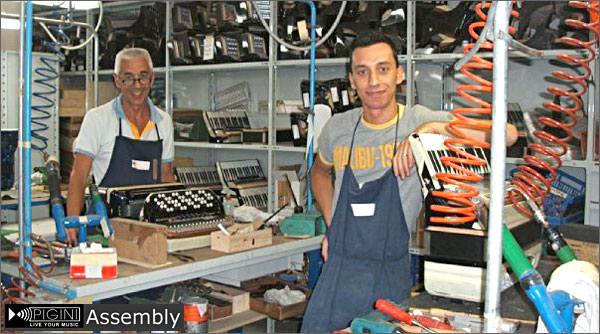It can sustain a sound/sounds and make subtle nuances of crescendo and diminuendo. It has a big dynamic range from ppp to fff and can achieve great contrast in colour from its registers – 2 x 16 foot, 8 foot and 4 foot. It can be regarded as a small organ in that respect.
It is worth noting that CPE Bach and Mozart wanted instrument makers to develop a small portable keyboard instrument that could sustain a sound. One such experiment produced an instrument called a bogenklavier (bowed piano). CPE Bach wrote a sonata for it.
In an educational context, the classical accordion has huge possibilities; it doesn’t need accompaniment and can accompany other instruments. The classical accordion is especially effective with string instruments. “If cellists want to discover all the possibilities of the cello, they should play with accordion and not piano”, Rostropovich.
A child can learn harmony, counter-point, phrasing (bellows control) and technical and musical development are not held back because of a physical inability to stretch large intervals with one hand. A young child can easily stretch over one octave. There is now an accredited grade examination syllabus by the Trinity/Guildhall examination board which is linked to the school system.

Although still a young instrument, the classical accordion has a substantial repertoire (see repertoire lists) of solo, chamber and concerto works. And composers are using it to great effect in orchestral works too. A few examples are: Harrison Birtwistle opera ‘The Last Supper’, Per Nørgaard ‘Terrains Vagues’, Sofia Gubaidulina ‘Figures of Time’, Poul Ruder’s opera ‘Kafka’.
Owen Murray plays on a custom hand-made classical accordion, model ‘MYTHOS’ - the “Stradivarius” of the accordion world, MYTHOS nr.27, made in 2008 at the Pigini accordion factory in Castelfidardo, Italy.
The instrument is tuned by Viktor Melnyk